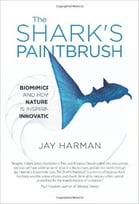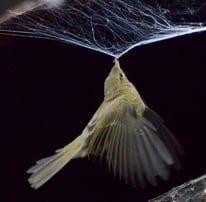 A shortfall of every business I work with, and judging by our group of Gazelles Coaches and Verne Harnish’s work with mid-size business as well, is innovation.
A shortfall of every business I work with, and judging by our group of Gazelles Coaches and Verne Harnish’s work with mid-size business as well, is innovation.
We have a series of slides in our Gazelles proprietary resources designed to discover and help our coaching customers improve their innovation process. It’s called the Innovation Window. I recall working with one of my customers and sharing with his team this idea. The result of this presentation revealed that innovation in their business was simply a doodle pad or someone bringing and idea to the CEO and he either responding yes or no. This company had originated through a breakthrough discovery in moisture testing, yet they had failed to remain consistent with their origins and continue to work systematically on continuing to innovate.
 If your business struggles to organically and systematically innovate, you’re not alone. However just because you’re not alone is not reason to not fear the consequences of failing to do anything.
If your business struggles to organically and systematically innovate, you’re not alone. However just because you’re not alone is not reason to not fear the consequences of failing to do anything.
Jay Harman, author of The Shark's Paintbrush offered ideas to stimulate innovation, and provide clues as to where your industry and businesses next innovation might come from.
For a short 3-minute explanation of Jay’s book watch the video.
BIOMIMOCRY – HOW NATURE INNOVATES
Your next innovation might be a simple as observing nature.
How does nature solve the same issues and problems you and your customers face?
Two weeks ago in Verne Harnish’s newsletter (if you’re not receiving this yet, don’t delay – sign up now to receive it weekly!) Verne offered these insights into Harman’s 2016 Dallas Growth Summit presentation:
Biomimicry Expert -- serial entrepreneur Jay Harman, author of The Shark's Paintbrush, electrified our Fortune Summit audience as he shared how leading edge firms, including his, are taking clues from nature to build next-generation products and businesses. For instance, huge municipal water tanks require massive chemicals to keep the water safe, yet with a mixer designed to mimic nature, a small "lily" consuming the electricity of 3 light bulbs can successfully keep 10 million gallons circulating and thus dramatically reduce the amount of chemicals needed. (Notice the design of this tool – how it mimics the whirling motion in the trailer video to Jay’s book.)
Better Office Flooring -- taking a clue from nature's "flooring" (sand, leaves, rocks, etc.), the i2 carpet tile system allows tiles to be installed in any order and orientation, reducing installation time. This also means you can replace individual "random" tiles at any time without worrying about a perfect match (lot runs, dyes, fading, etc.). All of this saves you money, time, and waste. In addition, simply putting pictures of nature on the walls reduces stress and increases happiness/productivity. (Where might this application have value in your business?)
3.8 Billion Years -- as biomimicry expert Janine Benyus notes, nature has been around a lot longer than humans and has figured out how to adapt and survive in ways that take considerably less resources and lower energy. Take a spider's web, 3 times stronger than steel. Humans use lots of pressure, heat, and force to make steel. Spiders, low pressure and water.
Why Don’t Spider Webs Entangle Birds?
 Harman explained that you never see birds caught in a spider web? Why is this? Evidently spider webs contain UV reflectiveness that the birds see to avoid them.
Harman explained that you never see birds caught in a spider web? Why is this? Evidently spider webs contain UV reflectiveness that the birds see to avoid them.
Every year over 1 billion birds are killed due to slamming into glass windows.
A company has developed glass now that incorporates this UV reflectiveness which should result in a 70% reduction in birds’ deaths.
Nature’s Solutions
Harman believes the world economy moved away from nature’s ideas about the time of the industrial revolution. Prior to this many of the ideas for products came from nature. One particularly brilliant idea was barbed wire fences which came from a thorny bush. Velcro is another example of nature’s influence on innovations and products.
If you observe any man-made machine designed to go fast, you’ll see that it is built to be smooth.
In nature, however nature doesn’t polish anything. In fact, it’s just the opposite. A shark’s skin is rough, yet a Mako shark can reach speeds of 50 MPH in water! Sceintist are looking at nature’s methods to stop colonization of bacteria. An innovation here could lead to the elimination of antiseptics.
These same ideas for reducing friction could be used on ships and planes. Did you know that 15 large cargo/merchant ships produce more pollution than all the automobiles in the world combined? Imagine the impact of reducing this.
Nature never uses a straight line to get some place. What can we learn from nature to improve our efficiencies?
We’ve all observed swarms of birds flying. How do they manage to do this and avoid traffic jams? Science is researching and observing these patterns to discover how autonomous vehicles might eliminate traffic jams soon!
CURIOUS?
If you’re looking for ideas and applications of nature, check out asknature.org. there’s a page dedicated to help you learn all about using biomimicry for problem solving.
If your business is challenged to discover how to innovate better and more consistently I urge you to observe nature and check out how others are already taking advantage of the “free” resources we have in nature to achieve it.
NEXT BLOG
Are you using 1989 tactics to manage your time in today’s more complex work environment. That’s when Steven Covey’s four quadrants for time management in his book The 7 Habits of Highly Effective People® was written. You can’t use yesterday’s time management to manage today. In 1989 the TV remote hadn’t even been invented. Rory Vaden adds another element to the important and urgent equation that makes a significant difference in how we need to manage our time today. That’s next blog.






.jpeg?width=150&height=135&name=Hand%20with%20marker%20writing%20the%20question%20Whats%20Next_%20(1).jpeg)

